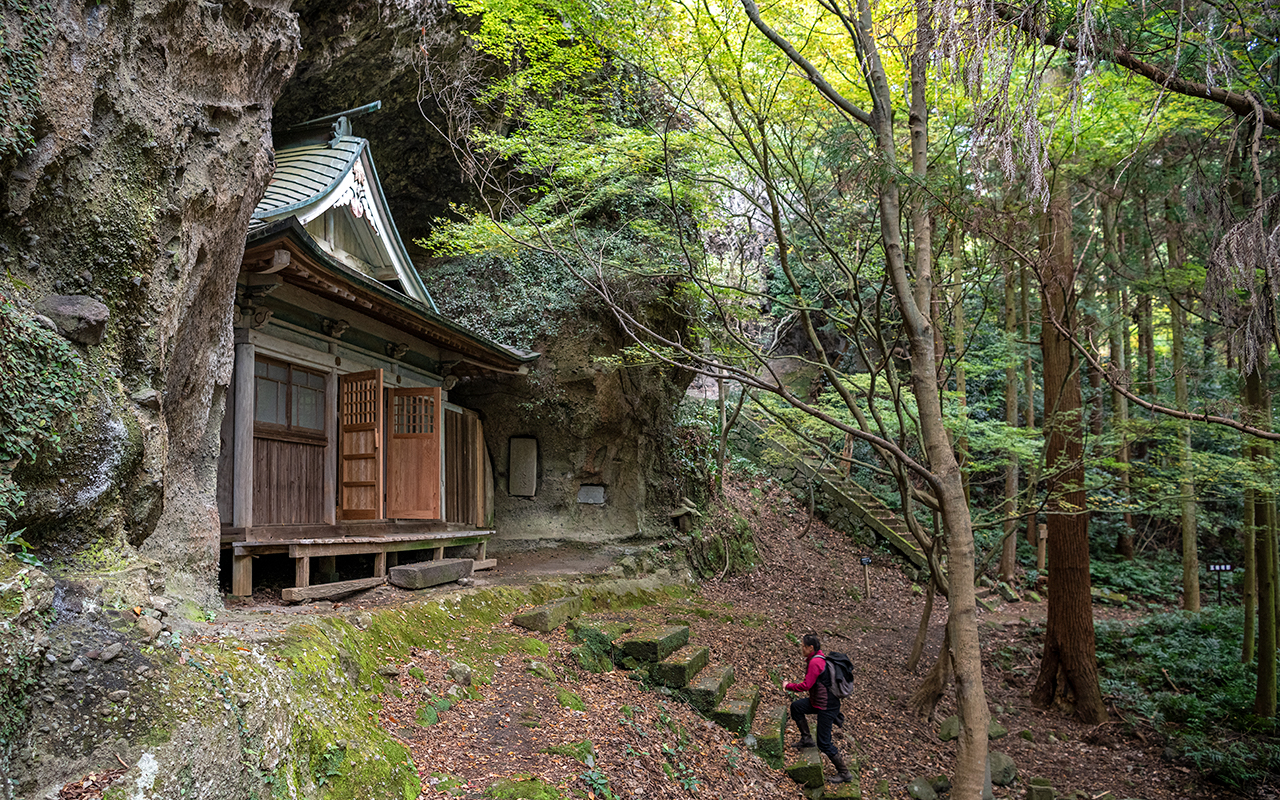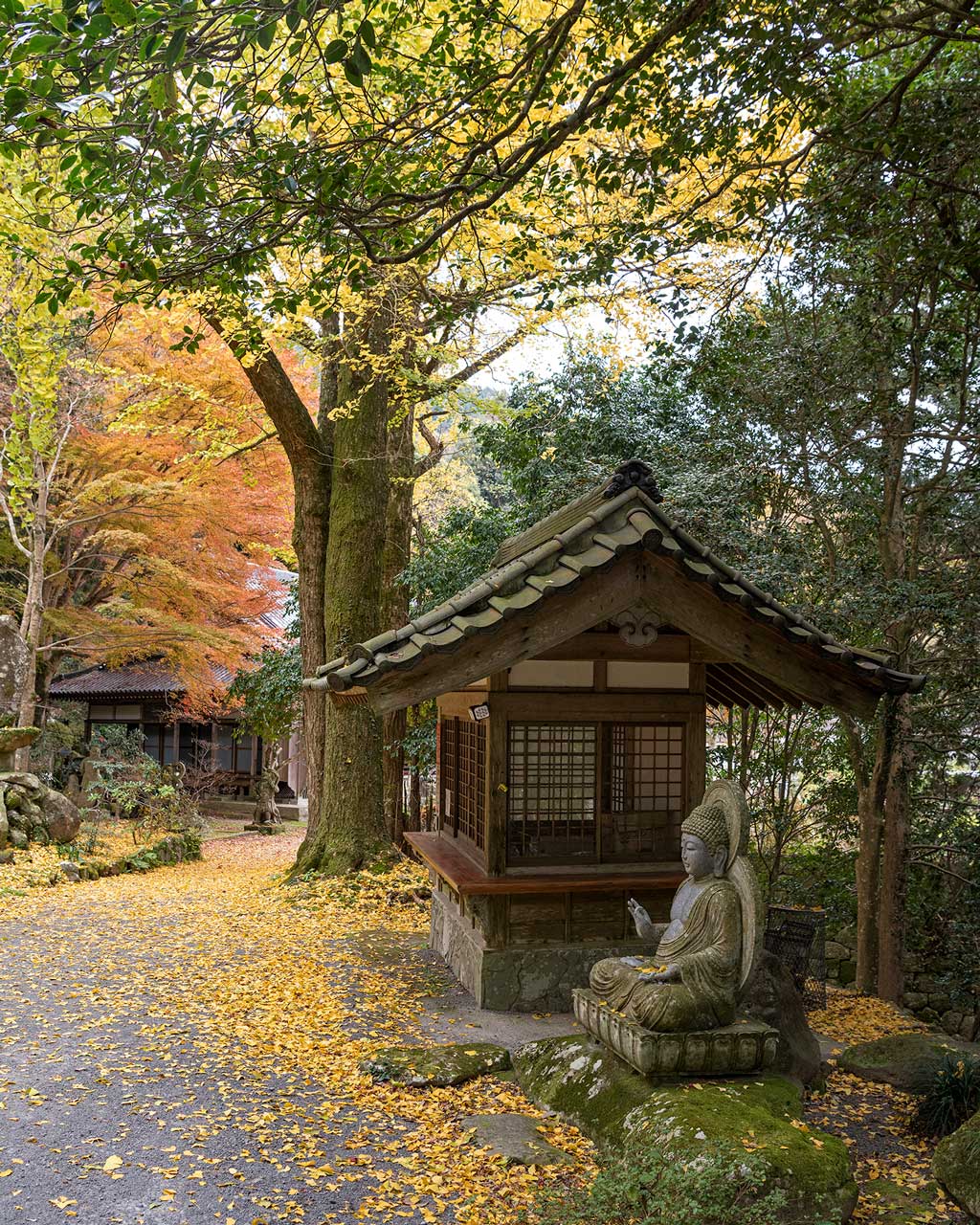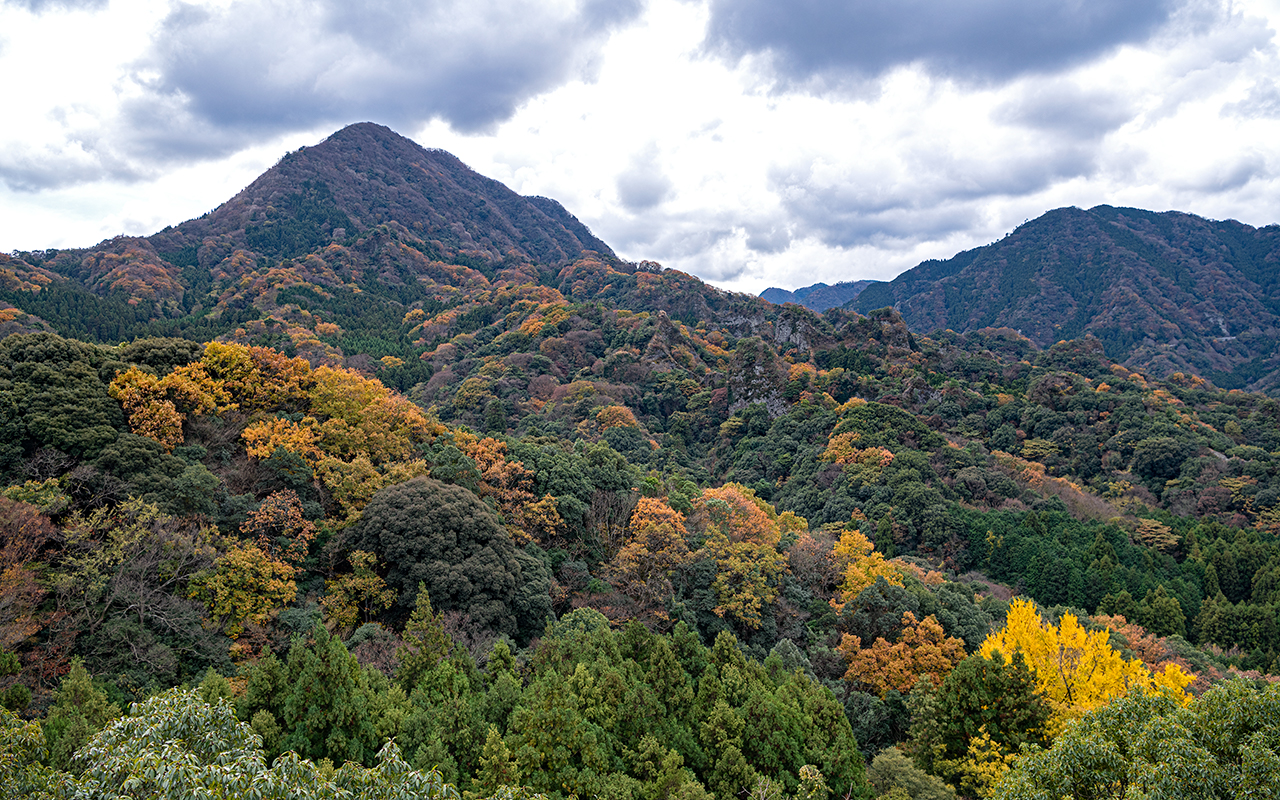
Scott A Woodward is a Canadian-born, Singapore-based photographer who has spent the past 25 years living and telling stories across Asia.
His photography features regularly in Travel + Leisure Southeast Asia as well as a wide variety of other publications, including National Geographic Magazine, Monocle, Esquire, Vogue, The Washington Post and The New York Times.
His father, also an avid and accomplished amateur photographer, taught him how to operate a manual camera as a young boy. But more importantly, his dad instilled in him a sense of wonder and adventure; it is these traits, he believes, that truly make him a photographer.
What does the photograph capture?
This is a portrait of Junyu Kono, the 39-year-old vice abbot of the historic Fukiji on Japan’s peaceful Kunisaki Peninsula. The 900-year-old temple grounds were blanketed in golden gingko leaves over which Kono padded as he toured us through the surrounding moss-covered stupas. I was struck by the beauty of the scene and recall feeling eager to begin photographing the complex and the monk before the sun set on us.
After our introduction to Fukiji, I asked Kono if he would pose for me in front of the historic building, to which he quietly agreed. Just as he settled into place, the late afternoon sun briefly peeked out from behind the clouds, casting the most beautiful warm light across the amber ground and onto the side of his face while throwing long shadows onto the wooden temple behind him. I was only able to quickly take a few images before the sun disappeared for the day, but in those fleeting moments I was able to capture what would become my favourite photograph of my entire Japan shoot.
What do you love about this particular image?
To me this photograph captures serenity, sacrifice, strength and stoicism. Fukiji was abandoned in the early 20th century and battered by decades of neglect and disrepair. It was Kono’s grandfather who restored the temple to its former glory following World War II. To have his grandson – a third generation monk who has committed his life to his spirituality and the preservation of Fukiji – standing proudly in front of this celebrated national landmark is, to me, a testament to faith and an honour to his family.

What was the assignment?
I was in Japan photographing a feature for SilverKris about the Japanese concept of ikigai – “reason for being” – focusing on the spirited residents who have committed their lives to preserving local culture and cuisine and injecting energy into the ageing rural communities that dot Kyushu’s storied Kunisaki Peninsula.
What was the most memorable moment of the assignment?
This experience on the Kunisaki Peninsula came via Walk Japan, a boutique travel company specialising in off-the-beaten-path tours, and included a total of six guests and two guides. The group bonded over the course of our shared experience and on one of our final evenings, while staying in a quaint ryokan (traditional Japanese inn), a lot of sake was imbibed which led to a makeshift karaoke session fashioned from an iPhone, YouTube and an empty glass which stood in for a microphone. Needless to say, breakfast the next morning was a little more subdued than the night preceding it.

What was the biggest challenge you faced?
I believe that one of the most difficult aspects of being a photographer is being truly and honestly self-critical of your own work. When editing my photographs, I try to remove all the extraneous emotion that was involved when I was making them: the people I was with, the characters I met, the adventures I shared – really all the memories of the experience that are inextricably linked to the moments surrounding the time when I pressed the shutter – and be truly critical of the artistic merit of the picture.
Even after all these years as a professional storyteller, I often find this hard to do, and my assignment in Japan was one of these times. I took more than 4,000 photographs while shooting this feature and distilling this body of work down to just a couple of hundred images to present to my photo editor as a visual representation of my experience was the most challenging aspect of this assignment.
What’s your one piece of advice for budding photographers?
Being able to make compelling photography is just a small part of being a successful photographer. Of course, you must possess the requisite technical and creative skills, and developing a personal visual style or photographic signature is crucial.
However, in my opinion, the most important key to commercial success is seeing yourself not just as a service provider to your client, but as a true creative partner to them. Understanding their requirements and working closely with your client to provide these – while injecting your own unique look and feel into your photography – will ensure that you are someone they return to in the future.
What’s your favourite place to photograph in the world and why?
Undoubtedly, it is the tiny Himalayan kingdom of Bhutan. Nestled in the creases of the Eastern Himalayas – and wedged between the Indian plains to the south and the precipitous Tibetan region of China to the north – the tiny kingdom of Bhutan is veiled in mystery.
Owing to strict tourism policies that regulate the number of annual visitors, the Bhutanese government has successfully safeguarded the country from the mass tourism that has afflicted many of its Asian neighbours, making Bhutan one of the world’s least-travelled countries. The small nation is home to vast, breathtaking topography, disparate climatic regions and gentle, gracious people with a colourful culture. Simply, Bhutan is a photographer’s nirvana and the most inspiring destination I have ever documented. You can view some of my photos from Bhutan here.

What’s been your most memorable travel experience for work or pleasure?
My most memorable travel experience also comes from Japan. It was nine days I spent trekking the Kumano Kodo, a 900-year-old pilgrimage on Japan’s Kii Peninsula, and one of only two pilgrimages preserved as a UNESCO World Heritage site. It was a most unforgettable spiritual and photographic adventure, and I found myself overwhelmed by the natural splendour and inherent mysticism of the trail.
Hiking underneath centuries-old Japanese cedar and pine trees, gliding across carpets of scarlet maple leaves and scampering up mossy stone pathways became an almost meditative experience where I reflected deeply upon life, death and the close human connections we share while on this earth.
Where would you love to photograph that you haven’t yet?
The aurora borealis in the far northern reaches of Norway is a natural wonder that I fantasise about witnessing and photographing.

What are your three travel essentials?
Apple iPhone 11 Pro Max – The best camera is the one that’s with you – and my mobile phone always is. Bose QC35 II noise cancelling headphones – It’s a treat for long flights or blocking out buzzing streets while trying to sleep. Lowepro Backpack – I have more than half a dozen Lowepro backpacks, and each one is for a different type of trip or photography assignment: a compact one for day shoots, a sleek one for street shoots, a large one for commercial shoots, a waterproof one for beach shoots, a rugged one for trekking shoots and so on.
Where do you dream of travelling to next?
There are so many places in the world that I long to experience people dream of meeting, but the top of my list are the nomadic Dukha reindeer herders who live in small communities in the taiga of north central Mongolia, edging the border with Russia.
See more of Scott Woodward’s photography here.
To learn more about Singapore Airlines flights, visit singaporeair.com. For more information and travel advisories, please visit Ministry of Foreign Affairs’ website.
SEE ALSO: Meet the spirited residents of Japan’s storied Kunisaki Peninsula
The post My best shot: Fukiji Temple, Kunisaki, Japan appeared first on SilverKris.
from SilverKris
No comments:
Post a Comment